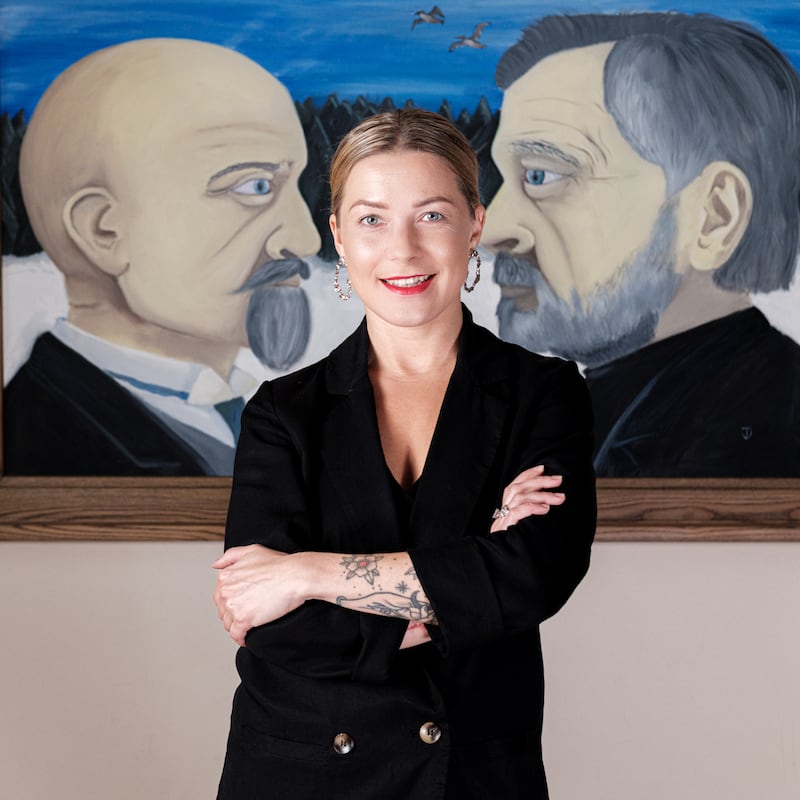Mari Roostik, a secondary school principal in Estonia, is not a computer programmer and has no knowledge of coding, but recently spent 10 weeks working for a start-up tech company.
“I was there learning how to lead, to learn how they monitor how people are developing and ensure they are happy, healthy and haven’t burned out,” says Roostik.
This approach to leadership is just one of the reasons why Estonian schools are excelling and the students are outperforming all other European countries in maths and science.
According to Pisa, an international assessment of the knowledge and skills of 15-year-old students, Estonia ranks first among European countries.
READ MORE
When Roostik returned to her school, Jaan Poska Gymnasium, she applied what she learned to the educational setting.
“I believe in team-based leading,” says Roostik. “The most important thing I learned was to put the right people in the right places and let them do their job.”
Delegating allows Roostik to focus on the management and finances of the school, leaving the education to the teachers.
In Estonia schools are also given autonomy around curriculum design. “It means that 20 per cent of the curriculum is decided by the school management,” says Roostik.
At Jaan Poska Gymnasium, for example, they have used this autonomy to create a programme that supports how teenagers learn.
The school caters for 16- to 19-year-old students and Roostik and her team believe it is important to highlight how teenagers learn and why, sometimes, it might be difficult.
“They learn how to adapt to the new culture of our school, they learn how to learn and the different strategies involved,” says Roostik.
“We teach them about their brain, make them aware that it’s normal for them to want to sleep longer. Our students’ results have gotten better since we implemented the mentorship curriculum because they know why they are learning.”

Autonomy is also given to schools when it comes to professional development.
“Nowadays study circles in schools are more common,” says Kai Koort, project manager of Estonian Education and Youth Board and a former teacher.
“This means that you have extra free time for teachers to collaborate. In my school, we had them on Tuesday mornings where students were able to retake their tests if they needed or they could sleep longer.”
The time allocated to these circles can vary depending on a school’s need. “Different schools have it in the mornings, or in the evenings, every week, or once a month,” says Koort. “You can also invite people from the university to come and help you with theory,” says Koort.
Schools also look to each other for advice. “In that sense Estonian schools are very open. They literally share their best practices,” says Koort.
While teachers in Estonia are highly qualified, Henrik Salum, principal of Gustav Adolf Grammar School, says accessing professional development is essential for teachers.
“I don’t think in the modern world, you can be a teacher and not develop yourself,” says Salum.
Each school has a budget allocated for teacher training, though he says it “should be a lot bigger”.
Salum facilitates training in a variety of ways from general teacher training sessions to in-house training. The school also adopts a particularly modern approach to teacher training when the need arises.
“We have had cases where students give a training session to teach us,” says Salum, “You have to consider the fact that the younger generations are much more fluent in technology. It’s not a question of the teacher thinking they need to be the smartest person in the classroom. If the student is smarter in some way, then let them teach you.”
Salum agrees that autonomy plays a leading role in delivering educational success and, at Gustav Adolf Grammar School, it is part of their culture.
“I’m of the opinion that you need to give teachers a lot of freedom, because it’s a very creative kind of job,” says Salum. “In our school we have teachers who really embrace technology. We also have teachers who are not so fond of technology, who use other methods and are equally appreciated by students.”
Estonian schools are subject to inspections, but they are not concerned with teaching and learning, they are focused on administration and finances.
Salum says teachers appreciate the fact that they are not constantly regulated by the school board. “As a head of the school, you have to trust your teachers,” says Salum.
Whole school inspections may not be a feature of the Estonian education system, but they do collect data regularly from schools and this helps identify any changes that may be required while also monitoring the success of current policies.
“Using evidence as a basis is a central principle in governing the Estonian education system. We analyse the potential effects of any proposed changes using data to find the best solutions,” says Sandra Fomotskin, chief analyst with the Estonian Ministry of Education and Research.
Schools are also given an option to participate in a survey that measures staff and student well-being.
“Participating schools and kindergartens receive comprehensive reports on their results, informing their plans to support student and teacher well-being, thereby enhancing learning and teaching quality,” says Fomotskin.
Another feature of the Estonian education system that promotes success may lie in school starting ages. The vast majority of parents choose to send their children to kindergarten, typically from three to six years, while formal schooling begins at seven.
At Meelespea Kindergarten the 12-hour day is a mix of activity and quiet time, and the addition of a pool means that most children learn to swim here from two or three years old.
“We have music and physical education teachers, and our therapist works with children with special needs,” says Kristina Marks, director of Tallinn Meelespea Kindergarten.
Salum says children who attend Kindergarten gain invaluable social skills. “They know what it’s like to be around other kids,” says Salum. “That’s a huge plus.”
Another benefit of attending kindergarten is the opportunity given to access assessments and therapies, such as speech and language, before formal schooling commences.
The teachers in kindergarten can identify a student who may benefit from an assessment and, if the parents consent, the student can then access recommended therapy through a programme known as Pathfinder.
Once an application has been made there is a maximum wait time of 70 days for the initial assessment. “It’s directly connected to education. You don’t have to go to the doctor, it’s closely related to the school and your special needs in education, that’s why it goes quicker,” says Kroot.
If Pathfinder recommends therapy, the school will receive funding to provide it at school. However, if parents choose not to participate, the schools and students are left without the support. This can present challenges for both teacher and student working in large class sizes.
While there is no denying Estonia has cracked the code on how to deliver a rounded and successful education to its students, there is also a sense that they may not be able to maintain it.
“There is a lack of teachers in Estonia,” says Kroot. “We are struggling with our own issues. There is no career path, your salary doesn’t rise over time. People who are more ambitious leave the profession.”
Roostik is concerned that the growing workload coupled with the gap between the salary and increased cost of living will make it difficult to keep teachers in teaching.
“We are expecting an inhuman amount of work from teachers, and we can’t give them salary to match because we don’t have it,” says Roostik. “I think the most important challenge for us now is to keep good, professional, qualified teachers in schools.”
- Follow The Irish Times education section on Facebook and X (Twitter) and stay up to date




















